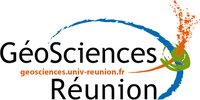Co-Ni-arsenide mineralisation in the Bou Azzer district (Anti-Atlas, Morocco): genetic model and tectonic implications
Résumé
The two main types of mineralisation in the Co-Ni-As Bou Azzer district, i.e., “contact” mineralisation” and “cross-cutting” structures have been re-defined based on new field, structural, textural and mineralogical observations. The main orebodies consists of elongated lenses of massive Ni-Co-Fe arsenide minerals. These lenses occur in a core of carbonate or siliceous gangue and are almost exclusively located along the contact between serpentinite and a quartz diorite intrusion. Vein systems, cross-cutting the different lithologies, are ore-bearing only along segments in contact with the serpentinite and/or the massive mineralisation. The two orebody types share a rather similar mineralisation history, starting with a Ni-rich arsenide stage (mainly expressed within the massive mineralisation), followed by a massive Co-arsenide stage recognised in both mineralisation styles, and ending with Fe-rich arsenide and base metal sulphide stage.
Detailed field observations, microstructural, tectonic, textural and mineralogical analyses led us to propose a genetic model for the Bou Azzer ore district in which massive mineralisation was formed by alteration and transformation of previously formed breccia levels composed of serpentinite (transformed to gangue) and magnetite/spinel (transformed to Co-Ni arsenide minerals) fragments. Inversely, a tectono-hydrothermal event controlled by a NE oriented transtension generated the vein system, associated certainly with partial leaching and reconcentration of metals from the massive mineralisation because veins are principally mineralised when crossing massive orebodies. We discuss a possible temporal continuum between the two mineralisation styles: massive mineralisation, coeval with serpentinisation (serpentine neoformation), is related to the transformation of brecciated lenses and vein mineralisation is formed as an infill of large fractures during transtensive tectonics. This model has significant tectonic implications, because serpentinite breccia lenses, favourable high-permeability environment for the massive mineralisation formation, can be compared to ophicalcic rocks developed in a context of mantle exhumation by detachment. Two types of textures can be differentiated within the massive mineralisation: i) Brecciated Massive Mineralisation, developed in the core of ophicalcic levels, and ii) Laminated Massive Mineralisation, supposed to form within ancient mylonitic serpentinite levels corresponding to intensive deformation zones. Although the geodynamic significance will not be addressed in this article, we propose and discuss an alternative model in which the presence of exhumed mantle rocks allows the formation of specific massive arsenide deposits.
| Origine | Fichiers produits par l'(les) auteur(s) |
|---|

